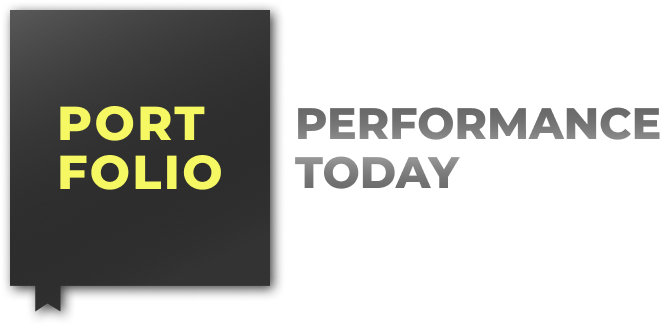

Wireless protocols have been the backbone of Internet of Things (IoT) sensor networks, as they influence everything from battery life to system scalability and long-term maintenance. LoRaWAN and EnOcean are two leading technologies that are used in smart buildings, industrial monitoring, environmental sensing and distributed infrastructure.
Whilst these are both used for low power IoT, they are fundamentally different in architecture, energy usage and scale, so how should an organisation decide which protocol aligns best with their building, deployment size and operational requirements?
To explain further, Pressac, specialists in IoT sensors discuss both technologies, looking at their strengths, limitations and practical fit for real-world applications.
Understanding LoRaWAN and EnOcean
LoRaWAN is a Low Power Wide Area Network protocol designed for long-range, low-power communication across wide geographic areas. In urban areas this spans 2-5km, whilst in rural or open environments it can stretch beyond 15km.
The network structure is made up of end devices that span to gateways, then a network server and the application. It is most commonly used in smart campuses and estates, environmental sensors across large sites, utilities and metering, and logistics and asset tracking.
It has proved to be extremely popular thanks to its exceptional range and low power usage, as well as its ability to support thousands of devices through an open ecosystem of private or public networks.
However, it is worth remembering that it does have low bandwidth, which means it is not ideal for high frequency data. It is also battery dependent, so it requires long term maintenance and a gateway infrastructure.
EnOcean is a self-powered, energy-harvesting wireless protocol that has been built specifically for building automation. Its sensors generate their own power from things like motion, light, or temperature differences which removes the need for any batteries.
This type of protocol has been designed for short-range indoor applications of a range of typically 10 to 30 metres, which is ideal for commercial buildings. It is therefore commonly used in occupancy detection, carbon dioxide and indoor air quality monitoring, heating and ventilation control, and lighting automation.
EnOcean systems benefit from needing no battery replacements and ultra-low maintenance. They have a sustainable long-operation lifespan and have proven interoperability with BMS vendors. However, they do have a much shorter range than the LoRaWAN system and a limited payload size, which means they are not really designed for use on campus or city-scale networks.
Key technical differences
When it comes to the range and coverage of the two systems, LoRaWAN boasts a multi-kilometre range which is ideal for covering distributed sites, whilst EnOcean has a short-range indoor connectivity that is best suited to single buildings or nearby rooms. LoRaWAN sensors rely on long-life batteries that can last anything from three to 10 years, whilst EnOcean devices are maintenance free thanks to their energy harvesting technology.
Data rates are also a very important consideration and the ultra-low data rates provided by LoRaWAN make it optimal for infrequent uplinks. Anyone wanting faster and more responsive communication used in building control is better suited to the EnOcean system.
In terms of security and interoperability, LoRaWAN uses AES-128 encryption and supports private networks for full control. EnOcean integrates natively with major building management systems such as KNX, BACnet and LON.
The deployment complexity of both systems is also an important consideration, with LoRaWAN requiring gateways and network servers whilst EnOcean is deployed quickly at room level with minimal infrastructure.
The costs with LoRaWAN tend to be flexible through free private networks or subscription-based public networks. There is a lower deployment cost for EnOcean protocols, but these are often tied to building automation ecosystems.
Integration with BMS can be an important consideration, and EnOcean is therefore the stronger choice for office buildings that are already using KNX or BACnet. LoRaWAN is more suited to environments where BMS integration is lighter or remote monitoring is needed.
Matching the protocol to the application
For smart buildings like offices, retail, hospitals and schools, EnOcean is an ideal system due to its self-powered sensors, rapid installation and native BMS compatibility. It is great for occupancy, desk usage, indoor air quality, lighting control, and HVAC optimisation.
In large scale or distributed networks across campuses, warehouses, industrial sites, and agriculture LoRaWAN excels. It is at its strongest where sensors need to operate over large distances without Wi-Fi, so it is perfect for car park monitoring, energy meters across multi-building estates, water level or waste monitoring, or outdoor air quality sensing.
Many organisations choose to use a hybrid of both systems, with EnOcean being employed indoors for room-by-room control and LoRaWAN outdoors or across wider facilities. For example, a university campus might use EnOcean for lecture theatre occupancy and LoRaWAN for environmental sensors between buildings.
Choosing the right protocol
Anyone looking for indoor room control needs to use EnOcean whilst outdoor or distance control requires LoRaWAN. If your network scale is no bigger than a single building then EnOcean should be your chosen protocol, whilst LoRaWAN is used in multi-building or geographical spread.
If your maintenance resources are low, then EnOcean’s battery-free design is probably a better choice. However, if you have the ability to manage batteries then LoRaWAN can be an acceptable option.
Integration needs are also an important consideration, so any organisation that is heavily reliant on BMS will need to turn to EnOcean, whilst flexible standalone or private networks can use LoRaWAN. Real-time or responsive control is also EnOcean’s forte whilst periodic monitoring with small payloads is more appropriate for LoRaWAN.
Choosing between LoRaWAN and EnOcean will come down to understanding the scale, environment and performance requirements of your IoT project. EnOcean is a powerful, maintenance free solution for smart buildings where real time control, sustainability and seamless BMS integration are priorities.
However, LoRaWAN delivers unmatched range and scalability, making it ideal for distributed sites, outdoor environments, and larger estates where long-distance communication matters more than data rate.
By assessing factors such as deployment size, integration needs, maintenance resources and data frequency, organisations can match the right protocol to the right application and build an IoT network that is reliable, efficient and fit for long-term growth.
The post LoRaWAN vs EnOcean: Which is the right protocol for wireless IoT sensor networks? appeared first on IoT Business News.
